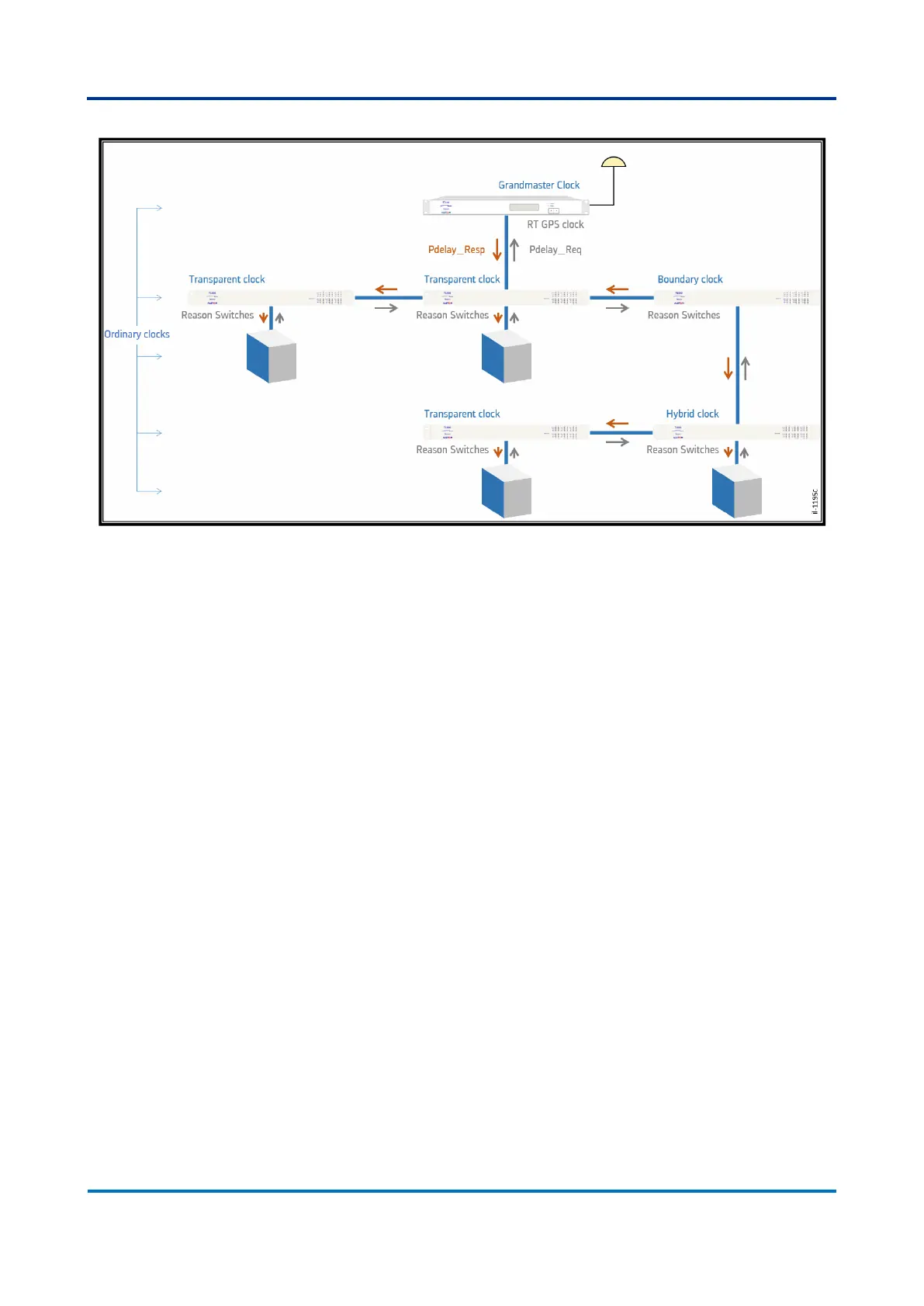Figure 66: PTP network
As shown in the previous figure, there are several elements in the PTP network. The
main elements in a PTP-aware environment are:
Grand Master Clock (GMC): This clock is the top-level master at the network,
usually a GPS-based clock. Atomic clocks can also be used as Grand master
at a PTP network;
Master Clock (MC): A master clock at a given subdomains, which can be the
GMC clock or the boundary clock;
Ordinary Clock (OC): A clock in the PTP network, which can be either master
or a slave clock. If the ordinary clock is a master clock, it can be the master
or the grand master clock of the network;
Transparent Clock (TC): A clock that forwards Sync messages with value of
the forwarding process delay included at the message;
Boundary Clock (BC): A clock that has a slave port synchronized by a master
clock and a master port which synchronizes a time sub-domain;
Hybrid Clock (HC): A clock that operates as Boundary and Transparent
clocks.
The PTP operation over the network is as shown below.
